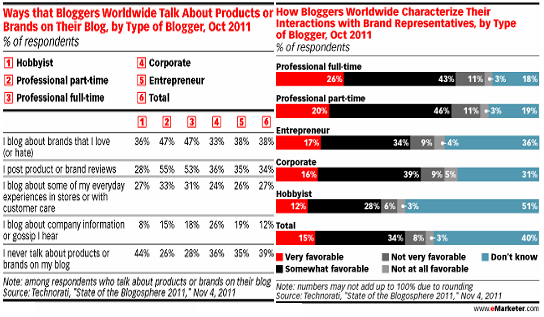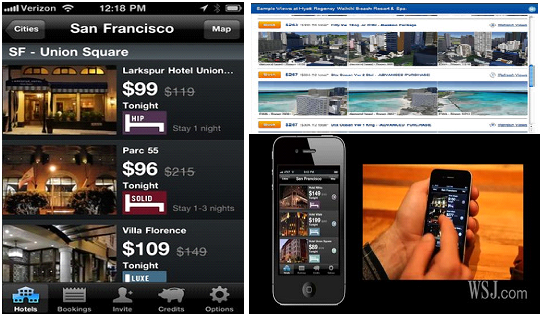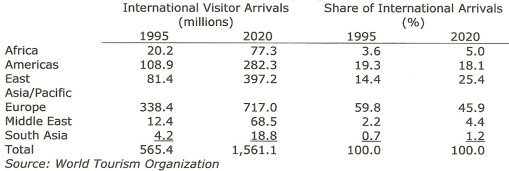Abstract
The current trends within the hospitality industry indicate that modern technological innovations have become an overriding competitive edge within the globalised market arena. The increasing awareness and demand by consumers for better services have made technology the most viable medium of communication.
Consequently, emerging themes like interactive social media, mobile phones and shifting travel patterns have challenged the hotel industry players to integrate these forums within their strategic plans.
The hospitality industry though adversely affected by the current global recession and turbulence within the EU countries has nevertheless recorded growth from the emerging markets of Asia/Pacific and Latin America, particularly the Middle East, India, China and the South East regions.
This paper therefore critically examines the influence of social media as viable tool for the hospitality industry for interacting with hotel clients and other stakeholders as well as marketing products or getting feedbacks from customers.
An analysis of the prevailing major themes is studied from the hotel industry foremost website ehotelier.com, in addition to other current writings on the subject from the European Travel Commission, World Travel Trends Report, plus other topical reports and writings on the hotel industry.
The results suggest the following:
- Technology has emerged as a critical tool to promote and enhance service within the industry,
- Interactive social media is the most viable tool for marketing and enhancing service to the clientele,
- Bloggers are the major definitive influence within the social media,
- There is a need to incorporate organization employees in the hotel’s internal social media to generate workplace improvement ideas,
- Shifts in the global travel patterns require fresh strategies to meet these challenges.
Introduction
Contemporary hotel industry administrators have realized the significance of technological advances especially the internet where social media has emerged as a veritable tool for commerce and customer service. Although other industries have embraced the technology proactively, the hospitality industry that often relies on travel agents and personalized service has not been versatile or quick enough to integrate online forums effectively.
Similarly, outlooks indicate declining returns and number of visitors to the US but vast prospects in the emerging markets. This study therefore attempts to explore the future trends within the industry as regards to social media and the emerging travel destinations of Asia and Latin America.
The Impact of Bloggers
The power of social media on contemporary hospitality industry is typified by the impact of bloggers. They are able to affect a brand through positive or negative blogs. A “State of the Blogosphere 2011″ report from the website tracking directory Technorati, indicates that 38 percent of these blogs are commentaries concerning brands that are either loved or loathed, while 34 percent post concerned goods or service analysis.

This is principally evident amongst the career bloggers keenly analyzing brands for diverse industries. Amongst them, 68 percent of the bloggers were influenced by fellow online bloggers (ehotelier.com, 2011).
As firms acknowledge the blogger’s influence, they have wisely chosen not to ignore them and instead proactively engaged them on their blogs or via the target company’s own interactive blogs (Terrero, 2009).
Subsequently, most bloggers have evolved an amicable relationship with the designated organizations’ representative eager to respond to issues raised particularly those concerning quality and service within their outlets or products retailed (Figure 1).
The bloggers are updated on their posts or any other shortcoming on a product thus limiting the damage the continued attack on the product or service effect sales. In addition, the responsiveness of the organization to customer complaints is addressed. Professional bloggers are thus acknowledged by the mainstream businesses particularly if they focus on appraising specific products.
Some bloggers concentrate on specific market segments of which they consider themselves authority on thereby gaining a sizable following online.
Opinions by the bloggers are thus likely to influence consumers of a firm’s merchandise especially if they highlight persistent service failures and commentaries from “followers” give abysmal performance of the product or service. On the contrary, if the comments are positive, consumers are likely to demand more sales hence driving up sales.
Social Media Within Organizations
Subsequently, ehotelier.com (2011), a website that streams hospitality news and topics, has proposed a raft of measures hotels should embrace in future to utilize the social media more effectively.

The first proposal encourages the hospitality industry leaders to engage their own staff proactively through social media by having them post “expert views” on the areas they work on as the way of generating viable ideas to enhance their workstations and service.
Staff ideas through the internal online network can be more effective especially if they are candid since they have more experience within their specific workstation.
As the post circulate through the social media, more ideas and suggestions will stream in thus leading to a creative discourse which can then be translated into practical ideas by the management after incorporating other diverse ‘experts’ comments on the thoughts generated.
Social as a Marketing Tool
Another technique is launching product offers and other rebates through the social media to fans in the corporations’ website. These discounted offers will generate a positive attitude towards the firm as they display gratitude for their being your consumers.
Similarly, through the social media, users who book or purchase orders through the forum can be offered a chance to compete for great prizes. The hotel must advertise this social media in its offline and online articles to engage more people interactively. Lastly, the posts in the social media must be more lively and all-inclusive devoid of the usual marketing cliché one-liners (ehotelier.com, 2011).
Mobile Phone Applications
With the surge in the influence of interactive social media in recent years, the new frontier has now shifted from the conventional laptops to smart phones and tablets like iPhone and iPad. Subsequently marketers have tapped this media by advertising their products and services online, which has accessible applications displaying veritable products like hotel rooms and their environment within their smart phones.
Fresh applications like HotelTonight and Room 77 are able to depict the ambience of the hotel rooms and other services while the established brands like Travelocity and Hotwire have been also selling services successfully.
Creating Better Links between Academic and Practical Hospitality
For the modern hotelier, there is need to educate or train themselves on new models of management in addition to evolving IT. There is often a discord amongst the top management of the hotels and line staff especially those trained at higher levels.
Subsequently, Gehrels (2007) argues that there is a greater need within the modern hospitality management curricula to create better links between academic and practical hospitality reflective modes that are being loosened through the abstract view of the traditional warmth towards clients and employees. This is particularly critical in higher education that unlike vocational training is detached from the industry.
Nevertheless, the author emphasis that top management and directors individual characteristics have much greater impact on the industry than those of line staff in influencing the direction the industry takes particularly amongst the luxury hotel segment.
Shifts in Global Visitors Patterns
According to the World Tourism Organization (WTO), there is a gradual shifts in global visitors travels as declines in the Americas will generate corresponding rise in the Asia/ Pacific region while Europe maintains it s top position by 2020.

The BRIC nations (Brazil, Russia, India, and China) are projected to have significant growth in travel numbers with China expected to register a 22 percent growth rate, Russia at 26 percent rise and Brazil a staggering 54 percent. The hospitality industry is thus confronted by great challenges though industry players are poised to deal with the emerging volatile climate (Raleigh, 2007).
The gradual shift in travel patterns mean that hotels in the west should seek partnership from the emerging markets to capitalize on the growth there. This would subsidize the decline and soaring expenditures in Europe and North America. Thus, Sinha (2011) has advocated the use of franchising in future to boost customer numbers particularly for those in the emerging markets still enjoying visitors’ boom.
This will translate to lower penetration costs for starters and global exposure, less expenses in infrastructure and training for the local entrepreneurs. This integrated approach can translate to better returns for the joint ventures as the established international hotels introduce higher standards and marketing experience as well as their royal clientele (Schneider, 2008).
Penetration of Social Media
There is also a need to set up specialized hotels like those catering for recuperating persons in locations like India, which is fast becoming the world’s most preferred medical retreat center for alternative low-priced and proficient treatments (Boehret, 2011).
However, the penetration of social media in these countries offers the chance for those hotels that erect futuristic contemporary structures opportunities to display ultramodern facilities that attract international visitors.
According to an international study by Frommer Unlimited, the ‘social media, web content, mobile applications, and standard search engine optimization’ will have the highest budget allocations by tour companies in 2012.
However, another study amongst customers in the US, the UK, France, and Germany by Pitney Bowes established that social media was the least effective marketing tool with only 18 percent displaying positive inclination to be swayed in electing to purchases items after interaction.
However, with studies indicating that there are over 1 billion users worldwide and a 98 percent awareness rate in Europe and 73 percent membership, not many businesses can dare ignore the potential impact of the social media (European Travel Commission, 2011).
Likewise, a JD Power research study found greater awareness amongst international travelers with 65 percent admitting to using social media at some point during their travel arrangements. The emerging markets led by the BRIC countries of Brazil, Russia, India and China revealed far greater penetration and approval of the social media and usage for travel purposes than the western nations.
Conversely, in the US, social media usage is rapidly waning especially among the youth according to a GlobalWebIndex “Wave 5 Trends” report with Facebook registering less activity while Twitter is only used for linkage to diverse news sites. However, with 710 million global users, Facebook is still the most visited site even in the US and with half of mobile internet traffic in Britain (ehotelier.com, 2011).
Promoting Lifestyle Hotels in Social Media
Using social media, hotels can consequently promote their facilities using blog sites and engaging travel agents who have greater capability to market them. High-class guests who customarily favor deluxe lodgings are booked in lifestyle hotels, an elite niche of high-class accommodation with the finest service available.
These hotels normally partner with renowned fashion houses to promote their brand thus have also being termed “boutique hotels” for their penchant for the ‘jet set’ groups of high spenders also called ‘heavy rollers’. In India, Armani fashion house has enjoined the hospitality industry with plans to construct lifestyle hotels (Schneider, 2008).
According to an Ernst & Young report, the lifestyle hotels enjoy average growth rates of upward 22 percent even as other brands are declining. These hotels are attractive in Asia, the new growth market with its unique architectural buildings thus various lifestyle hotels have emerged in China and India despite the huge outlay especially on property within the region.
In the Middle East, despite much restraint occasioned by cultural and religious traditions, the sector is still growing fast. The construction of lifestyle hotels in this region can be augmented by the use of new technology, which offers opportunity for marketing like social media, automated rooms, and video conferencing among others (Boehret, 2011).
However, growth in Latin America the other growth market has been rather slow though opportunity exists for the established brands to enter the market (Schneider, 2008).
Nonetheless, the World Travel Trends Report 2010/2011 indicates a brighter future for the industry after a strong recovery in world tourism, boom in emerging markets in Asia and Latin America with the UNWTO reporting a 4.5 percent upsurge in international arrivals (IPK International, 2011).
Technology will thus have a major impact on the industry with the likelihood hotel lobbies being manned by robots, and automated ‘smart rooms’ plus interactive media. Other trends entail specialized hotels for diverse categories including luxury, cultural, health, and family retreats (IPK International, 2011).
Conclusion
Contemporary technological innovations have become the driving force in the current globalised markets for business enterprises. The hotel industry though not at the forefront in embracing the inventions has nevertheless integrated the advances in the modern infrastructures, service delivery, and marketing tools.
Subsequently, Social media is thus the most viable marketing tool for the hospitality industry, being faster and inexpensive than other traditional formats. More firms will thus augment its usage for competitions, reviews and ratings, as search engines collate around it hence giving higher it high potential.
The hotel industry is thus obliged to embrace social media for marketing and customer service. The development of fresh destinations in the emergent markets of Asia and South America plus the unique popular lifestyle hotels erected there will in future replace the declining travel patterns in the US thus offering further opportunities for the aspiring and leading industry players.
References
Boehret, K. (2011). Hotel Booking for Procrastinators or the Picky. Web.
ehotelier.com. (2011). How Blogs Influence Purchases and Recommendations. Web.
European Travel Commission. (2011). Social Networking and UGC. Web.
IPK International. (2011). World Travel Trends Report 2010/2011. Munich: Messe Berlin GmbH.
Raleigh, L. (2007). Top Ten Issues in the Hospitality Industry for 2007. Web.
Schneider, J. W. (2008). Lifestyle hotel trends around the world. Building Design & Construction, 49(13), 28-n/a. Web.
Sinha, H. (2011). Cashing in on Sizzling Hotel Industry. Web.
Terrero, R. (2009). Social Revolution: Travel Execs Share Thoughts on Industry Trends and the Impact of Social Networking. Travel Agent, July 6: 9-11.